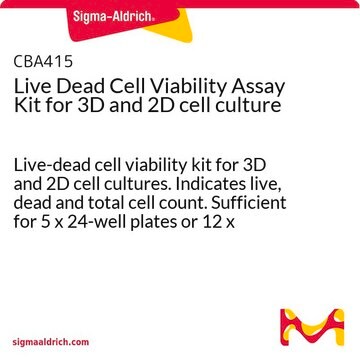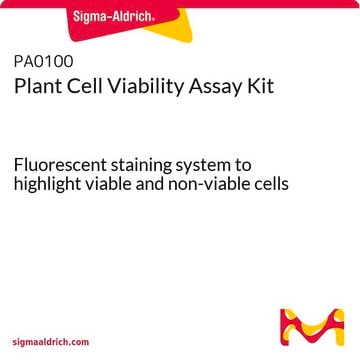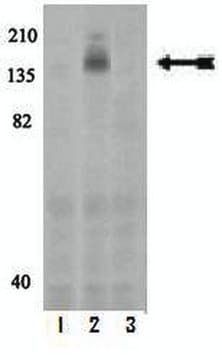This product requires preparation of a cell suspension and has not been validated for bacterial biofilms or cells attached to any surface.
04511
Live/Dead Cell Double Staining Kit
suitable for fluorescence
Sinonimo/i:
Staining kit for live/dead cells
Scegli un formato
1.100,00 €
Scegli un formato
About This Item
1.100,00 €
Prodotti consigliati
Applicazioni
Solo come componenti del kit
- Solution A (Calcein AM solution) 4 × 50
- Solution B (propidium iodide solution) 300 μL
Prodotti correlati
Codice della classe di stoccaggio
10 - Combustible liquids
Classe di pericolosità dell'acqua (WGK)
WGK 2
Punto d’infiammabilità (°F)
185.0 °F - closed cup
Punto d’infiammabilità (°C)
85 °C - closed cup
Scegli una delle versioni più recenti:
Possiedi già questo prodotto?
I documenti relativi ai prodotti acquistati recentemente sono disponibili nell’Archivio dei documenti.
I clienti hanno visto anche
Articoli
Saggi basati su cellule per valutare la proliferazione cellulare (BrdU, MTT, WST1), la vitalità cellulare e la citotossicità nel campo della ricerca oncologica, neuroscientifica e delle cellule staminali.
Cell based assays for cell proliferation (BrdU, MTT, WST1), cell viability and cytotoxicity experiments for applications in cancer, neuroscience and stem cell research.
-
Can this kit be used to assess cell viability within bacterial biofilms?
1 risposta-
Utile?
-
-
Can the live/dead double staining kit be used on fixed cells?
1 risposta-
The kit is not designed for use with just dead cells. When cells are fixed, it typically results in cell death for all cells. Consequently, if all the cells are dead, it is expected that the Calcein AM would not be able to enter the cells, as Calcein AM is not a fluorescent molecule. The available data sheet states, "While the cells are viable, the calcein generated from CalceinAM by esterase in a viable cell emits strong green fluorescence (excitation: 490 nm, emission: 515 nm)." Therefore, Calcein-AM only stains viable cells. If all the cells are dead, the only observed staining will be from the Propidium Iodide - which is the dead cell stain reagent in kit 04511.
If the cells are stained while viable, it is possible to image the cells after they have been fixed in paraformaldehyde or other fixatives. Although this is a common practice in some laboratories, It's suggested to consider a 10-minute fixation instead of 30 minutes, as fixing for 30 minutes may not be advisable.Utile?
-
-
How many assays or tests can be conducted using one kit of PN: 04511-1KT-F?
1 risposta-
The 04511 kit consists of 2 components, with reagent B being the limiting reagent, requiring just 300 microliters of reagent. To prepare the staining solution, 10 microliters of Reagent A and 5 microliters of Reagent B are mixed with 5 ml of PBS. Each test necessitates 100 microliters of the staining solution. With 5 microliters of Reagent B being sufficient for 50 tests, 300 microliters of Reagent B is adequate for 60 batches of the staining reagent, resulting in 3000 tests (50 x 60). Although the maximum number of specimens might not always be stained in practice, the kit theoretically should allow for 3000 tests.
Utile?
-
Filtri attivi
Il team dei nostri ricercatori vanta grande esperienza in tutte le aree della ricerca quali Life Science, scienza dei materiali, sintesi chimica, cromatografia, discipline analitiche, ecc..
Contatta l'Assistenza Tecnica.









